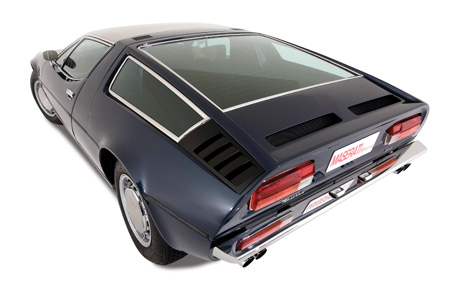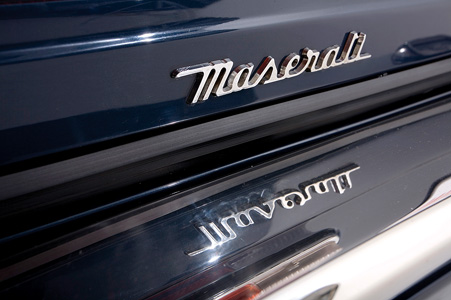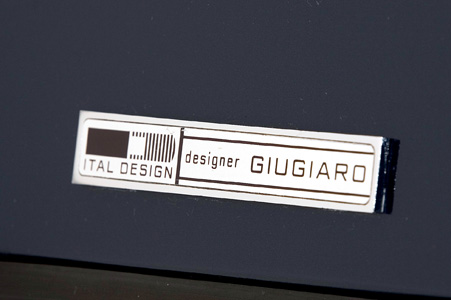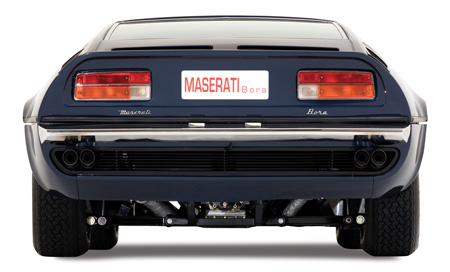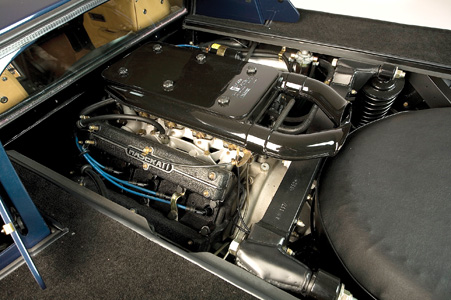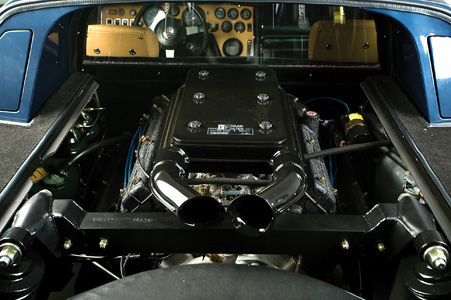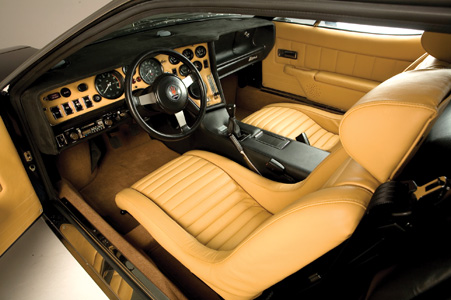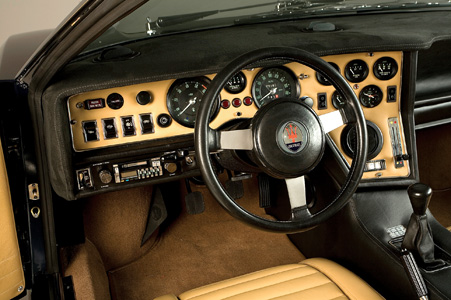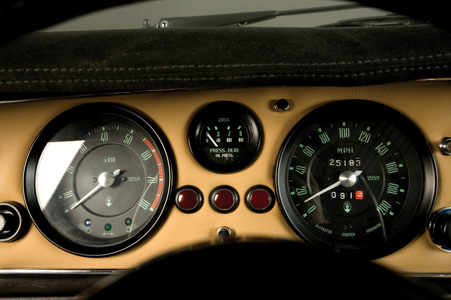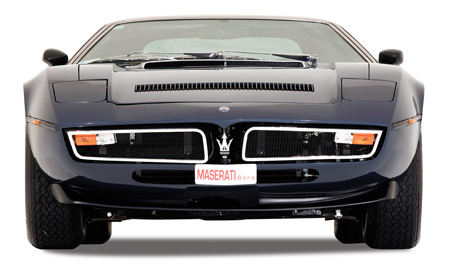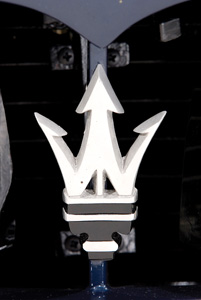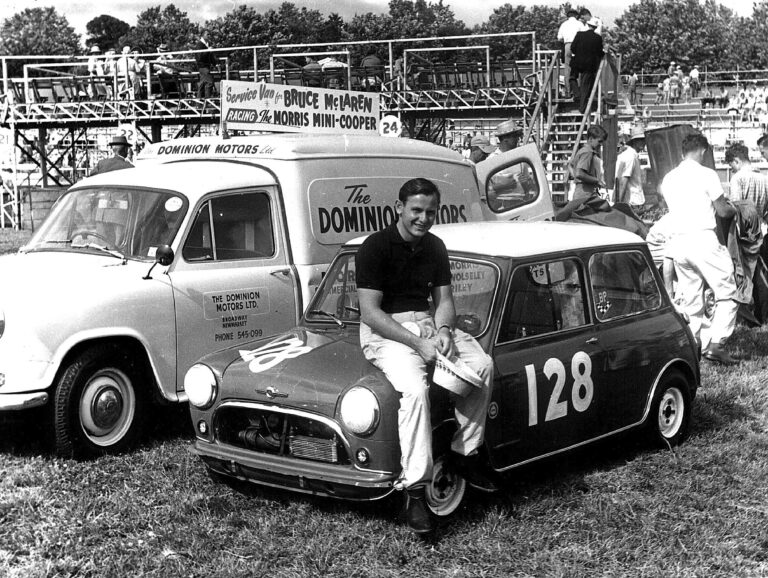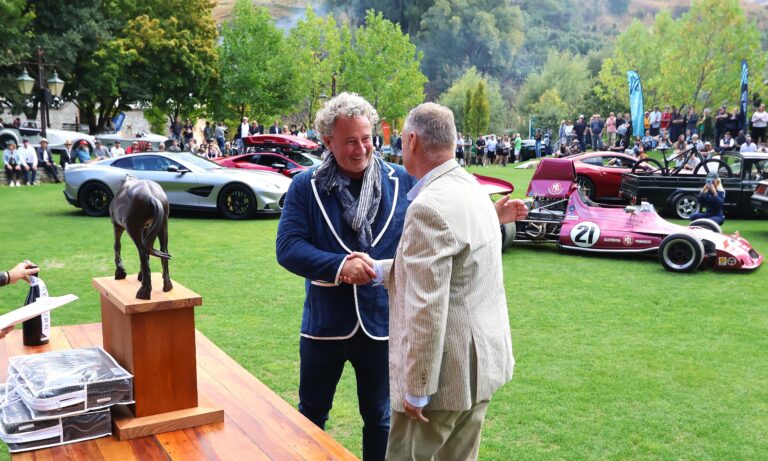data-animation-override>
“Published in New Zealand Classic Car Issue No. 200”

Up close and personal with Maserati’s first mid-engined sports car
What would you do if, while idly searching the internet, you discovered a tired Italian supercar sitting in a wrecker’s yard on the other side of the planet? Most of us would simply sigh, think ‘what if¦’ — then segue back into a day-dreaming state as we logged onto another site.
However, when the people doing the searching are acknowledged Maserati specialists — like father and son team, Gavin and Myles Hicks of Auckland — you can guarantee the end result will be far more positive.
From speculation to reality — in 2002, Gavin and Myles discovered a tired and neglected 4.9-litre Maserati Bora taking up space in a yard in Petersberg, Virginia. Painted in red, the Bora was a full US Federal specification car — as indicated by its ugly, 8kph impact bumpers. European Boras were fitted with smaller, more elegant chrome bumpers.
Under its previous ownership, the Bora had suffered the indignity of a minor engine bay fire — the damage being exacerbated by the eagerness of fire-fighters to open the car’s engine bay cover to quell the blaze. As a result, the Bora’s mighty V8 had been silenced and the rear of the car had suffered superficial damage.
However, with the remainder of the car looking to be in sound, original condition, Gavin and Myles began negotations and the Bora was shipped to New Zealand. While the pair busied themselves with other restoration projects, the US-sourced supercar languished in their workshop for several years as they slowly and methodically evaluated what parts would be needed to complete a total rebuild on the Maserati.
Perfectionists
Several years later, the Bora bobbed to the top of their ‘to-do’ list, and work began with a complete and thorough rebuild of the car’s 4.9-litre V8. Once finished, visitors to Gavin and Myles’ workshop were met with the sight of a beautifully restored Maserati engine — which was now attached to its separate sub-frame and, with the rear axle also fitted, the whole assembly could easily be rolled around. Anyone who knows Gavin and Myles also knows the pair are incapable of simply refurbishing a classic car — and the level of the Bora’s future restoration could easily be gained simply by glancing at the completed V8; a massive, alloy sculpture topped with a bank of gleaming, twin-choke Weber carburettors.
Slowly, over the next year or so, the Bora was gradually brought back to life. New mechanical components — still available through the Maserati factory, although definitely not cheap — were sourced. Replacement trim and body parts were harder to find, and involved many hours scouring the internet. Gavin and Myles were also lucky enough to discover a NOS rear screen for the car — the original having been damaged by the engine cook-up.
Virtually all the restoration work was carried our by Gavin and Myles in their own home workshop (although ‘home workshop’ hardly describes their professional-looking set-up), and even the final painting of the Bora was accomplished in their own spray booth.
It was at this point that Gavin and Myles diverged from originality and decided to repaint the car in blue, rather than its original shade of red — a colour they felt was too Ferrariesque for the Maserati. After searching old factory colour charts, they eventually settled on Blue Sera — a deep shade of blue which would show off the car’s brushed alumnium roof panel.
As well, the old black plastic battering ram-type bumpers were scrapped, to be replaced by a set of considerably more graceful European-spec bumpers.
Masters’ Class
As work on the Bora approached completion, Gavin and Myles set themselves a target — the 2007 NZCC Intermarque Concours, and they entered the car for Masters’ Class judging. This is an arena the pair are very familiar with, and their cars have scored top honours many times in the past. However, on the day before the Concours, Gavin and Myles were still working on the Bora; working well into the night to get the car ready for judging. By the time the Bora was rolled into the Ellerslie arena, both men were plainly exhausted and, after a brief chat, it also became evident that neither of them were totally happy with the Bora. It looked absoloutely gorgeous, but it just wasn’t good enough for perfectionists like Gavin and Myles. In the event, the Bora was pipped to the post by Frank Langridge’s beautiful MG TB (see NZCC, April 2007) and a comprehensively restored Ford Cortina MkI — although a mere 55 points seperated the MG TB from the third-placed Bora.
After the Concours, the Maserati once again disappeared into the workshop — and would not re-emerge until three months later, at which point work on the car was finally pronounced as being completed satisfactorily. For Gavin and Myles, the thrill of the chase and the subsequent restoration is the paramount consideration — Gavin admits he has driven no more than a few kilometres in the Bora.
With the finished Bora to one side, the pair turned their attention to their Renault Sport Spyder. Waiting in the wings is a recently acquired Mazda 110S Cosmo. Gavin and Myles may love their Maseratis (they also own another Bora, a Bi-Turbo, a Ghibli coupe and an Indy), but their passion for restoring classic cars knows no boundaries.
On the road
Only a few minutes behind the wheel confirms that the Bora does not share the skittish and tempermental nature of most Italian supercars of the same era — Maserati’s relatively unstressed V8 feels nothing like, for instance, Lamborghini’s edgily-tuned V12. In fact, once you have mastered the Bora’s Citröen-style olio-pneumatic brakes — which respond to progressive pressure rather than short, sharp applications — driving a Bora is remarkably easy. The truck-like ZF gearbox requires rather more muscle than mum’s hot-hatch, but drop it into third — which allows a speed range between 20 to 200kph — and you hardly need to swap cogs around town. And, with engine sounds deadened by a double-glazed rear bulkhead, the Bora is also surprisingly civilised — only at higher revs does the big V8’s snarl begin to signal its presence.
The Bora is a delight to drive, combining a firm but supple ride with well-weighted steering and powerful brakes. As you would expect, roadholding is also of a very high order although, with over 224kW (300bhp) on tap, it’s easy enough to kick the Bora’s tail out under power. Even an average driver would be capable of achieving epic point-to-point times in a Bora — all courtesy of Alfieri, who deliberately engineered the Bora to be virtually viceless.
This is one supercar which could easily be pressed into service as an everyday car as, despite its huge performance potential, the Bora is a remarkably well disciplined — as such, it could probably be seen as the very first truly modern, user-friendly supercar.
The Bora’s V8
The V8 used in the Bora originated with Maserati’s 1956/’57 4.5-litre V8 racing engine — however, it can be traced back as early as 1953 and Maserati’s four-cylinder 200SI engine. In effect, the 4.5-litre V8 is little more than two of these early engines joined together on a common crank.
Before the Bora, the V8 — now enlarged to 4.7 litres — was fitted to the gorgeous Ghibli, in which form it produced 246kW (330bhp). Because Maserati’s development weight target for the Bora was 1400kg, the V8 was slightly detuned to 231kW — although, by the time Bora production had begun, the car’s overall weight had gone up to 1800kg. The balance was redressed with the introduction of the 4.9-litre Bora (the additional capacity produced by lengthening the V8’s stroke), the result — 7kW more than the earlier, 4.7-litre cars.
Maserati via Citroen
No longer involved with Grand Prix racing, from 1958 Maserati concentrated almost entirely upon road cars, establishing a successful line of well equipped, front-engined models which began with the 1957 3500GT.
However, the Bora marked a new direction for Maserati, and although it would not appear until 1971, its ancestry can be traced back to 1965.
At that time Citroën was expanding rapidly — just as Maserati was struggling — and a link between the two companies was suggested, with Maserati providing technical assistance for a new GT car Citroën was working on; the SM. By early 1968, this informal level of cooperation became official and Citroën effectively took over Maserati.
Guy Mallaret of Citroën put forward a suggestion for a mid-engined Maserati, and the idea was soon taken up by Maserati’s technical director, Giulio Alfieri. Along with Auerelio Pollio and Maserati’s chief test-driver, Guarino Bertocchi, Alfieri would develop the Bora to a level unheard of in supercar circles at that time.
As if to confirm Maserati’s decision to build a mid-engined sports car (previous Maserati GTs had all been thoroughly conventional front-engined cars with cart-sprung rear axles) Lamborghini introduced its ground-breaking Miura, setting the formula for all future supercars.
The appearance of the Miura led to a mid-engined flood — with Ferrari, De Tomaso and Monteverdi all announcing similarly-configured sports cars — but Alfieri would not be rushed, anxious to develop a convincing car. The Bora would be the Modenese company’s first fully independently sprung car, and Alfieri over-engineered everything — designing a rear sub-frame to carry both engine and rear suspension.
This approach would lead to a very finely developed sports car, albeit one that exceeded its original weight targets by a considerable margin.
Wearing curvaceous bodywork styled by Giugiaro’s Ital Design studio, the Bora created a sensation at the 1971 Geneva Motor Show — it was a magnificent confection comprising a race-proven V8 equipped with olio-pneumatic brakes, pop-up headlights, and seat and foot-pedal adjustment.
Alfieri’s efforts were not wasted and the Bora would remain in production until 1978, virtually unchanged apart from the later addition of a larger capacity engine. It even survived the Citröen-enforced liquidation of May 1975 and remained current after Maserati was taken over Alessandro de Tomaso.
The Bora also spawned a little brother — the V6-powered Merak, which would eventually outlive the Bora and survive until 1983.
Words Allan Walton : Photos Jared Clark


